Gythion, Greece – Sparta & Mystras – Mar 30
We had a great group of 8 today. Tom & Cathy, Heather
& Matt and Roberta & John.
We were first in line for the first tender and actually were
ashore early and our guide was just arriving. The guide's name was Evangelia, and she is an archaeologist and tour guide. I don't remember the driver's name, but it was similar to what she was calling herself. (using a nickname like Lynnie)
Departing the port, we had a drive of approximately 1 hour
and 15 minutes through the lush valley of Evrotas. She was a wealth of
historical information that really helped us understand Sparta & Mystras.
We started with the trademark of Sparta the statue of Leonidas, which stands haughtily on the most central street of the city. The majestic and impressive statue of the king of Sparta was placed there in 1969 and is probably the most photographed landmark in the city.
Modern Sparta is characterized by the beautiful architecture
of the many neoclassical buildings and the palm trees along the central avenue,
which ends in front of the colossal bronze statue of Leonidas, the General, a
legend of the ancient times.
Unfortunately, there isn’t much left of the ancient city
itself, apart from a few foundations of the ancient city and remains of the
ancient theater, so we chose to spend most of our day in Mystras.
Mystras is a fortified town and a former municipality in Laconia, Peloponnese, Greece. it served as the capital of the Byzantine Despotate of the Morea in the 14th and 15th centuries, experiencing a period of prosperity and cultural flowering during the Palaeologan Renaissance, including the teachings of Gemistos Plethon. The site remained inhabited throughout the Ottoman period, when Western travelers mistook it for ancient Sparta. In the 1830s, it was abandoned and the new town of Sparti was built, approximately eight kilometers to the east. As an exceptionally well-preserved example of a Byzantine city and because of its testimony to the development of Late Byzantine and Post-byzantine art, Mystras was inscribed on the UNESCO World Heritage List in 1989.
We rode up the Taygetos Mountain to the ruined Byzantine city of
Mystras which is divided into 3 sections, surrounded
by the ancient walls, and has two gates, either to enter, or exit. There is one
on the top level and one on the lowest one.
Mystras, the ‘wonder of the Morea’, was a settlement built
like an amphitheater on the hill, forging a fortress. We started with the upper section with a stop for a photo op of a monastery that was closed for remodeling after being struck by lightning. She said if another monastery was open, we could visit that one.
The castle built by Villehardouin (Kastro), the Upper Town, for the aristocracy and Lower Town, for the local citizens.
We had a nice walk amongst the ruins of the medieval village, with cobbled alleys with many beautiful flowers in bloom in gardens along the way. We saw Byzantine churches with the wall paintings and some floor mosaics. We saw several foundations of houses where the nobles lived and the Palaces which are under restoration.
We then drove down to the lower part and finished our walking tour of the ruins. Just a fabulous place.
The most important
monuments, such as the Cathedral of Saint Demetrios, with its two-headed eagle
engraved in the floor, symbolizing the Byzantium, Greek Orthodoxy and
Paleologos Dynasty, which ruled the Byzantine empire in its last years. Visit Pantanasa
& Perivleptos. Continue further along the street, heading west, to see the
Mortuary Chapel of the Evangelista (Annunciation) before making your way to the
northern corner of the enclosure, where stands, the impressive Vrondocheon
Monestary, with its two churches: the church St Theodore and the church of the
Virgin Mary Hodegetreia, also known as Afendiko, who’s wall paintings will hold
you spellbound.
We stopped for a wonderful lunch where we sat on the patio soaking up the sun. The day started out cool, but we peeled off layers as the day went on. We were now down to the base layers as the day was sunny and warm. Greg and I split the roast lamb plate and Moussaka. Best moussaka ever. It was huge, but so light and flavorful. After we ordered 3 of us took off for our magnets and other shopping.
We drove back towards the port driving through the modern city of Sparta. We saw the main square and the rest of the modern city.
Back at the ship we had an hour left before the last tender. We and Tom & Cathy went for gelato. Cathy said she saw two shops on the drive in and we walked back and had some very good gelato. Black Chocolate and some Banana concoction that worked well together. Then, we went in search of baklava and there was a bakery close-by, so we stopped in there. We got a prepacked box and then got some of the freshly baked ones. We got 2 of 3 different kinds which were dessert tonight after dinner in the buffet. We then walked back to the port and got in the long line for the tenders. The ride back was turbulent and some on the little tender weren’t doing well with the motion. Once at the ship one lady was walked off as she was about to vomit. We waited until the crowd cleared and timed the swells to get off easily.
We got the clothes out of the dryer and then ate our
baklava. Wow, it was yummy! We still had time to catch the early show which was The Little Opera
Company. Awesome show!
We came back to the cabin and watched the movie Amsterdam.
We got to set the clocks back an hour tonight for an extra hour of sleep.
Tomorrow, we have a Sea Day. We need to rest up before we
have 5 ports in a row. Then 1 sea day and then 7 ports in a row!
Gythion, Greece – Sparta & Mystras https://photos.app.goo.gl/b65h28MuyF8FM2xV9
Birds seen:
Common
Buzzard
Eurasian
Collared-Dove
European
Goldfinch
European
Greenfinch
Hooded
Crow
Yellow-legged
Gull


























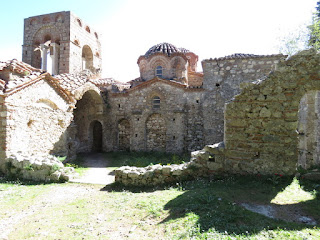





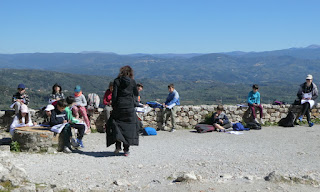




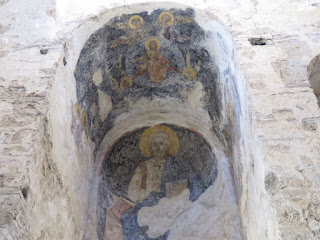





















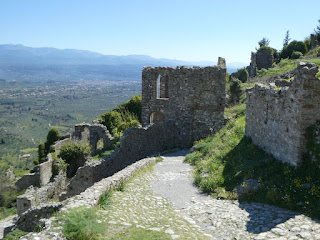







































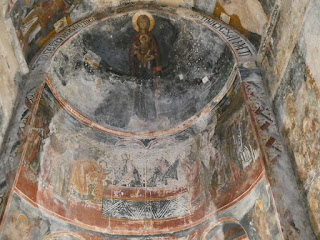


























































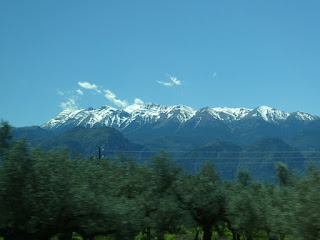


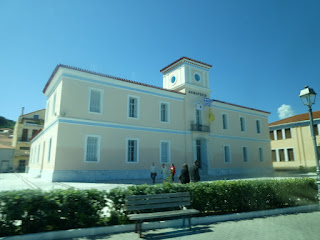





















No comments:
Post a Comment